In the land of sunshine and braais, where the woes of loadshedding have become a dishearteningly familiar refrain as Eskom’s troubles continue to cast a shadow over South Africa’s energy landscape, savvy investors may seek refuge in alternative energy.
As the sun sets on traditional power sources, we look at Renergen (JSE: REN) as this trailblazer harnesses the winds of change and captures the essence of possibility in a world where investing in the Green Wave gains significant traction.
Lights Out, Ideas On: Exploring Alternative Energy Amid Loadshedding
As South Africans come to terms with the dim reality that loadshedding is no temporary inconvenience but rather a permanent fixture in our everyday lives, alternative energy solutions may prevail as viable investment options for market players looking to safeguard their portfolios from the ongoing energy crisis.
According to the South African Reserve Bank, loadshedding is expected to increase by nearly 60% in 2023 from 2022, which could wreak havoc concerning economic growth and inflation. The persistent blackouts are predicted to inflate prices by a staggering 1.1% annually, and with South African inflation remaining stubbornly high, it is clear that loadshedding has economic consequences far more extreme than many could fathom. With headline consumer inflation ticking higher to 7.1% in March, up from 7% in February, further rate hikes may be in store for the already-struggling average South African consumer.
Amidst a landscape riddled with uncertainty, we direct our focus to Renergen. This innovative domestic alternative energy company holds the potential to illuminate some of the darkness cast by Eskom’s challenges. As a recent pioneer in the industry, Renergen offers a potential hedge to the Eskom woes and embodies the global trend towards reducing carbon emissions and investing in renewable energy solutions. The company’s operations align seamlessly with the quest for long-term sustainability, making it all that more topical. However, as the traditional saying goes, “Don’t count your chickens before they hatch,” market participants should understand there is still a long way to go before Renergen becomes a formidable force in the global helium and natural gas-producing industry.
Renergen Limited (JSE: REN)
In a world where innovation meets sustainable energy solutions like never before, Renergen, a trailblazing force in the energy sector, is making significant strides in unlocking a cleaner, greener future. With their pioneering technology, Renergen captures and liquefies natural gas from underground helium wells, taking a giant leap towards energy independence and reducing carbon footprints.
Through Renergen’s Virginia Gas Project, South Africa has joined a league of eight nations producing their own liquid helium, playing an indispensable role in numerous cutting-edge industries. From propelling space exploration and fuelling rocketry to empowering high-level scientific advancements, enhancing medical MRI machines, revolutionising fibre optics and telecommunications, enabling superconductivity, and empowering nuclear power stations, helium’s versatility knows no bounds. While helium is a precious resource known for its scarcity, the economic viability of its extraction is noteworthy. It becomes a financially viable pursuit even at concentrations as low as 0.1% within natural gas.
However, the Virginia Gas Project stands out with an impressive average helium concentration of 3.4%, which could open up unprecedented possibilities, potentially solidifying Renergen’s position as a valuable player in the helium extraction landscape.
Although the company aspires to become a global helium-producing powerhouse, significant work remains for Renergen to finalise the Virginia Gas Project before reaping such benefits.
- Renergen has already successfully sourced liquefied natural gas (LNG) and liquid helium from the Phase 1 plant in its Virginia Gas Project, making it the world’s newest producer of liquid helium.
- While the company’s Phase 1 liquefaction plant can produce approximately 50 tons of LNG daily, the subsequent phase is expected to produce the bulk of LNG and liquid helium. Renergen aims to increase its production capacity to around 680 tons daily, equivalent to approximately 940,000 litres of diesel per day, when it rolls out the Virginia Phase 2 liquefaction plant.
- On that note, Renergen has outlined its strategic goal of establishing a series of LNG refuelling stations across South Africa in the coming three years. This initiative will be implemented once Phase 2 of the Virginia Gas Project becomes operational.
- In a recent announcement, the company provided a glimpse into its endeavours through a collaboration with Time Link, a privately-owned transport and logistics company based in Cape Town.
- Through its subsidiary, Tetra4, Renergen has entered into an agreement with Time Link to supply LNG for their long-haul fleet, facilitating the company’s transition from costlier diesel fuel.
According to Renergen CEO Stefano Marani, establishing LNG refuelling points along major highways in the country is expected to proceed smoothly. Marani emphasised that these fuelling points will primarily cater to the transportation of goods between cities. Using LNG instead of diesel during long-haul trips, such as from Cape Town to Johannesburg, offers substantial cost savings. Additionally, Time Link acknowledged the positive environmental impact of reducing diesel consumption in their fleets, saying, “As fleet operators, we are always looking to reduce our carbon footprint, enhance fuel efficiency and reduce costs. Introducing LNG to displace diesel in our fleet makes sense.”
While there is still a long road ahead before Renergen completes the second phase of its Virginia Gas Project, it appears the company already has an advantageous position nationally and globally in the energy and helium sectors.
South Africa’s daily helium consumption sits at a mere 200kg, while the United States has an average daily consumption of approximately 35,000kg. The Virginia Phase 1 liquefaction plant aims to steadily increase liquid helium production to around 350kg per day during 2024, while the second phase is expected to reach a production capacity of up to 4,200kg per day. Having said that, if Renergen can successfully roll out the completion of its second phase in its Virginia Gas Project timeously, the potential exists for the company to emerge as a global powerhouse in the liquid helium-producing industry.
Fundamental Analysis
In Renergen’s recently-released 2023 financial statements, the locally-based natural gas and helium producer reported an impressive 381% year-over-year surge in revenue, coming in at R12.69 million for the 2023 financial year. Despite not realising a profit, the company cut its net loss figure by more than 20% to -R26.73 million for the 2023 financial year, while its EBITDA figure improved by just over 23% to -R30.11 million.
These improved financial results align with Renergen emerging as a producer rather than an explorer.
Year-to-date (YTD), Renergen has seen its share price outperform fellow industry peer Montauk Renewables, as seen in the price chart below. Despite outperforming its alternative energy peer, Renergen has lost nearly 7.5% to shareholders (orange line) since the beginning of the year. Montauk Renewables has lost close to 35% to shareholders (green line).
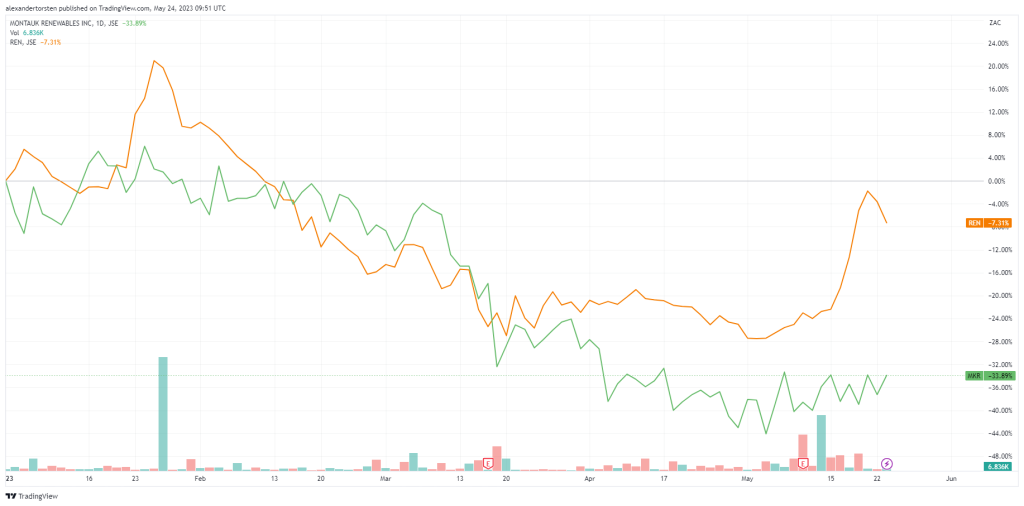
Over the last three months, Renergen has returned approximately 3.5% to shareholders (orange line), while Montauk Renewables has lost 32% over the same three-month period (green line).
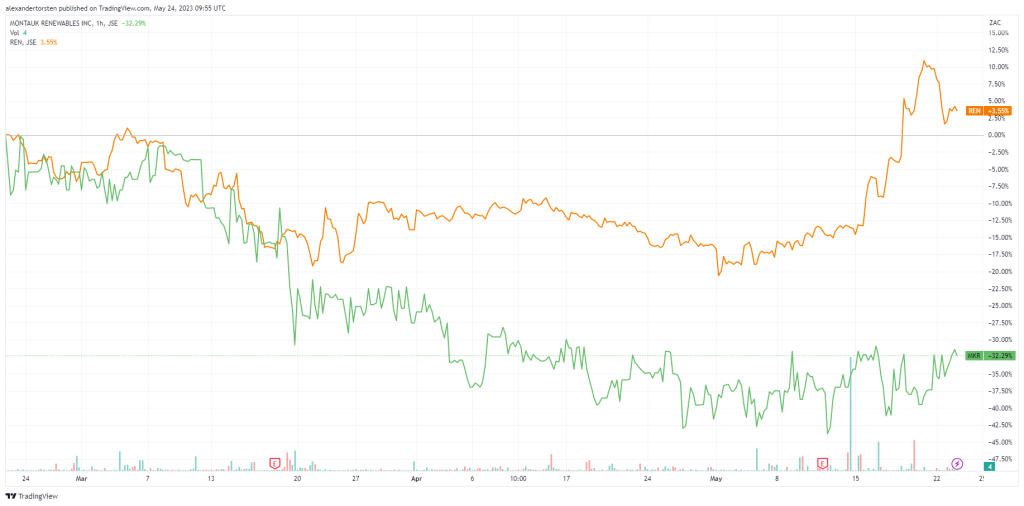
Technical Analysis
Analysing the weekly price chart of Renergen, it is clear that its share price has been consistently declining for just over a year, indicating a prevailing downtrend, with the 50-day moving average remaining above the candlesticks. Last week saw positive market sentiment push Renergen’s share price significantly higher, but this week has seen the share price retrace and tick down somewhat.
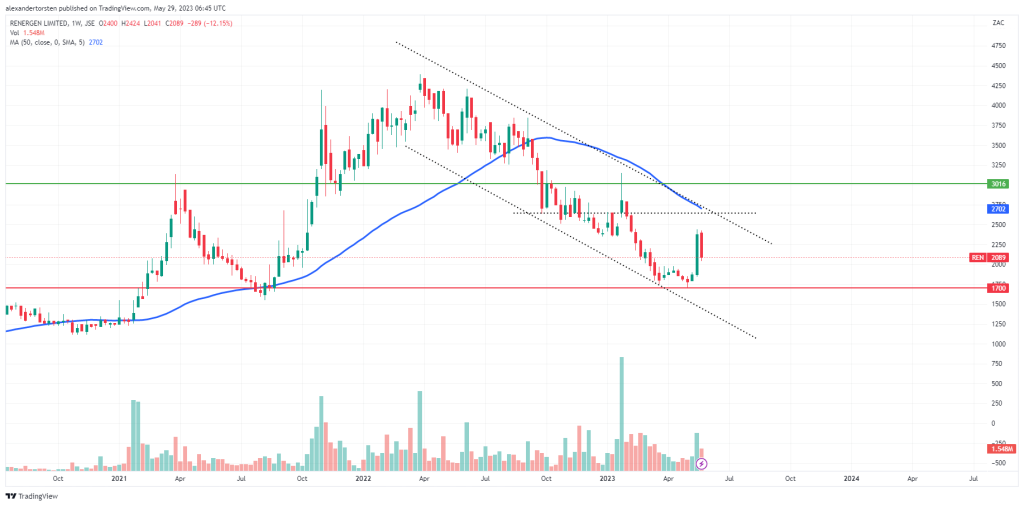
Looking at the daily chart analysis of Renergen, we can see that the company’s share price broke above its consolidation phase, exhibiting a pronounced upward trend. This week has seen some of that upward trajectory reverse as the share price retraces downward.
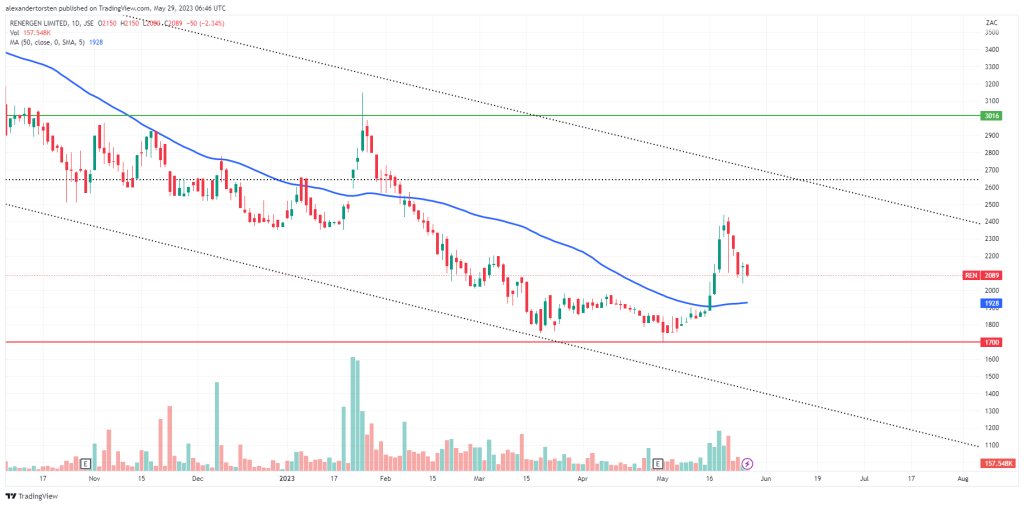
For the bull case, if positive sentiment persists around Renergen and if the local natural gas and helium producer rolls out the second phase of its Virginia Gas Project as expected, market participants could anticipate the share price to rise and potentially test the R26.40 resistance level (horizontal black dotted line). The R26.40 level could be watched closely by market participants as a potential entry point for bullish investors or a point at which the bears may expect a retracement toward lower levels.
For the bear case, if negative sentiment emerges as it has done in the past, Renergen’s share price could potentially fall lower and decline towards the primary support level at R17.00 (solid red line). Should there be a delay in rolling out the completion of Renergen’s second phase in its Virginia Gas Project, for example, market participants could potentially drag the share price lower.
* Sources: Business Live, IOL, Koyfin, Moneyweb, Renergen Ltd., Trading View


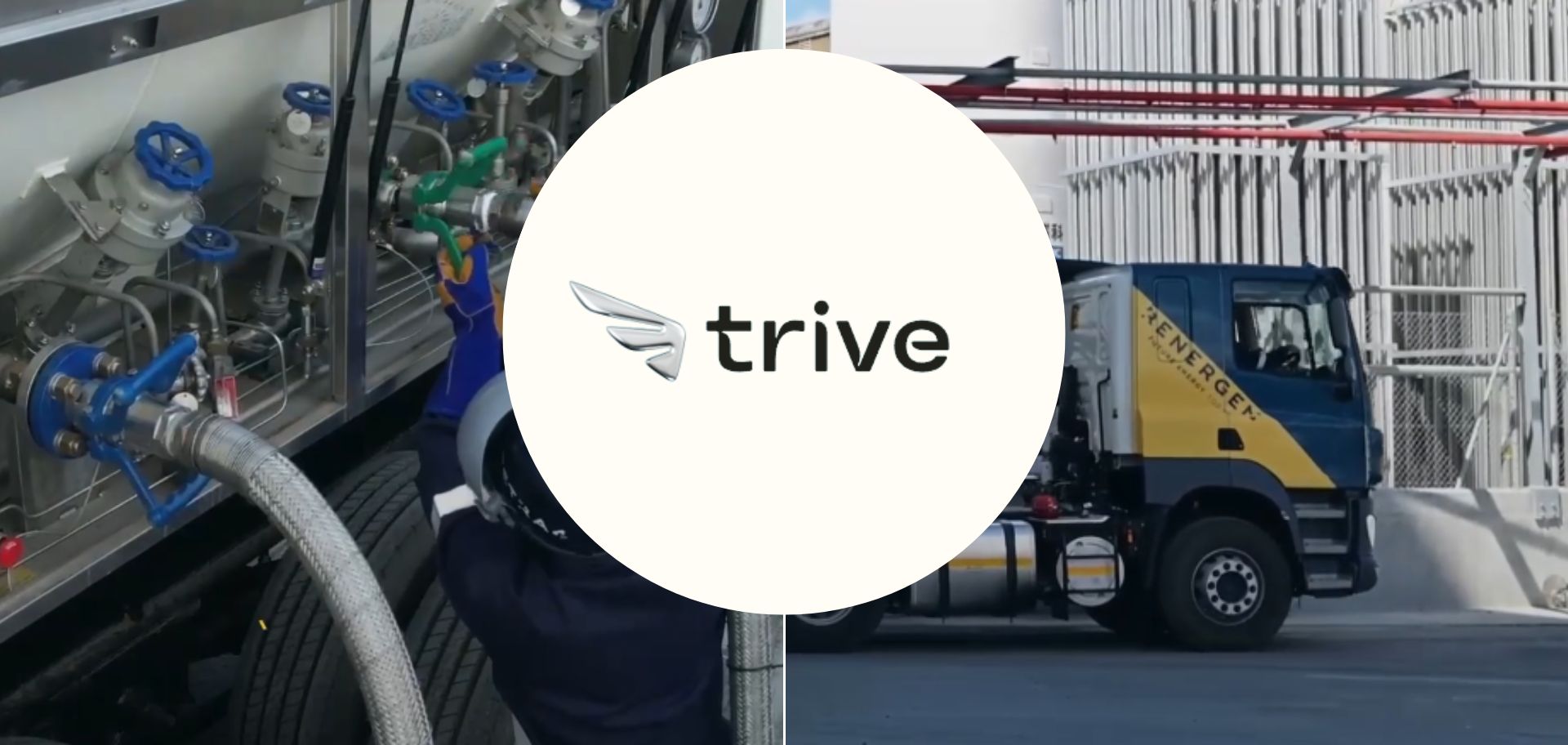


Not a word about the potential Nasdaq listing?